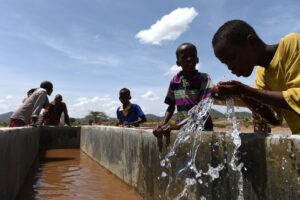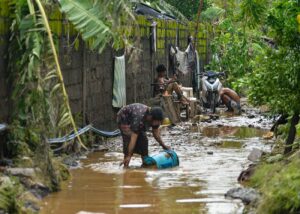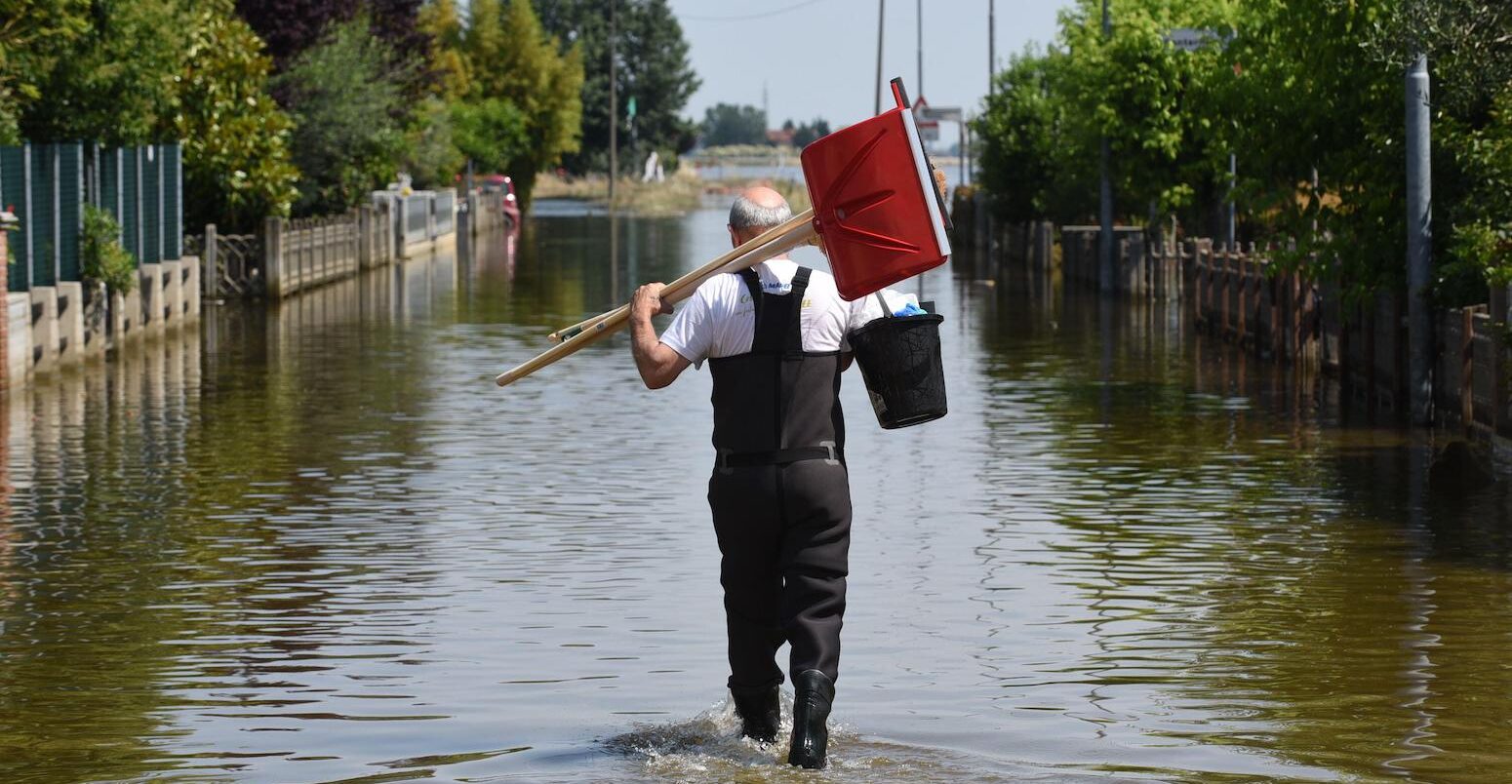
Climate change had no ‘significant’ impact on northern Italy floods in May 2023
Orla Dwyer
05.31.23Orla Dwyer
31.05.2023 | 5:00pmClimate change did not have a “significant” impact on the likelihood or intensity of recent “devastating” rainfall and flooding in a northern Italian region, new analysis shows.
Over the course of a few days in May, extremely high rainfall levels led to severe flooding in Emilia-Romagna, one of the wealthiest regions in Italy.
This one-in-200-year extreme weather event caused 17 deaths and displaced 50,000 people from their homes.
But although the rain levels were “very unusual”, a new study finds that climate change has not made high rainfall in this region at this time of year more likely to occur, or increased its intensity.
The findings are the latest in “attribution science”, which has linked human-caused climate change to drought in the Horn of Africa, a Western-Mediterranean heatwave and heavy rainfall from New Zealand’s Cyclone Gabrielle, among hundreds of other extreme weather events.
Drought to floods
Italy recently experienced its worst drought in 70 years, which a previous attribution study says was made “at least 20 times more likely” by human-caused climate change. The drought destroyed crops and led to the government declaring a state of emergency in five regions.
In February this year, it was reported that the country’s rivers and lakes still had low water levels following a winter with little rain and snow.
But this month, three bouts of severe rainfall over the course of a few days caused intense flooding and landslides in Emilia-Romagna. Six months’ worth of rain fell during the first 20 days in May, the new attribution study says.
The analysis, by an international team of climate scientists at World Weather Attribution, aimed to quantify the role that climate change may have played in the meteorological factors behind the heavy rainfall that led to floods and landslides.
The scientists used weather stations and other observational data, and climate models to evaluate the influence of climate change on the extreme rainfall.
Researchers focused on rainfall over the 21-day period in May 2023 in Emilia-Romagna and the maximum 21-day accumulated rainfall in April to June in previous years. The map below shows the location of the weather stations and the accumulated rainfall levels in the region in May 2023.
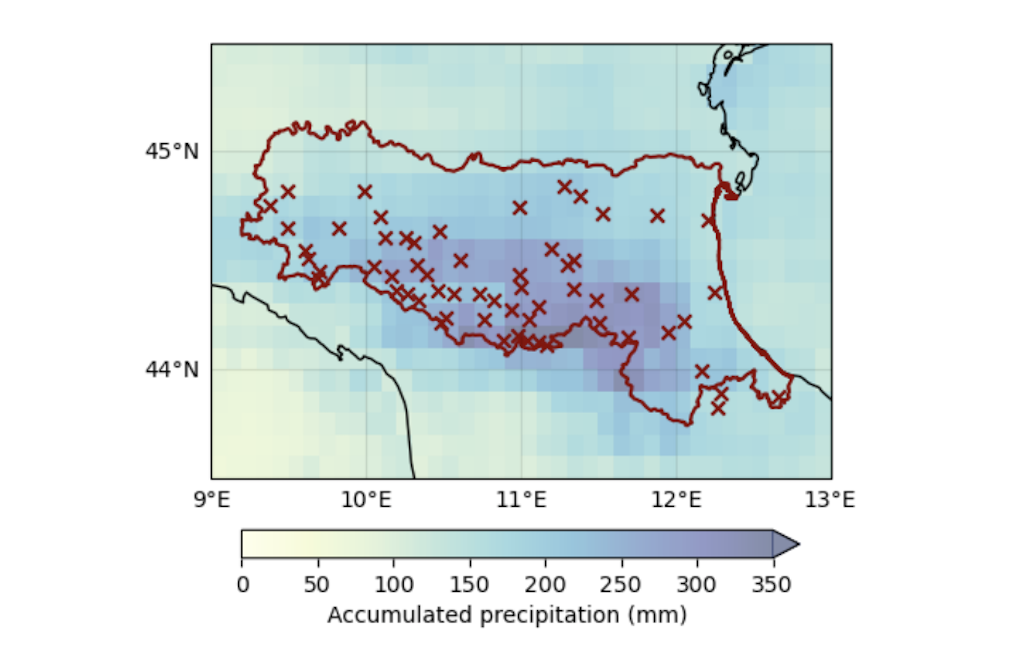
The findings show that climate change led to no “significant change in the likelihood or intensity of such an event” at this time of year in this Italian region. The researchers say this suggests that “there is indeed no detectable increase in heavy rainfall in the Emilia-Romagna region in spring”.
Dr Clair Barnes, study author and research associate at the Grantham Institute, Imperial College London, adds that “none of the models show any significant increase or decrease in the likelihood or the intensity of this kind of precipitation event”. She tells the press briefing:
“The uncertainties on that are very high, but it’s not a case of ‘some of the models say it’s going up, some say it’s going down’, they all have very little change. So they’re actually in agreement with each other.”
Our study found heavy spring rainfall isn't increasing or decreasing in Emilia-Romagna, suggesting two climate change related phenomena are counteracting each other:
— World Weather Attribution (@WWAttribution) June 1, 2023
less rainfall systems due to changes to atmospheric circulation VS heavier downpours due to a warmer atmosphere. pic.twitter.com/4qDb4oJ2x1
Dr Friederike Otto, a senior lecturer at the Grantham Institute at Imperial College London, says previous attribution studies that do not find climate change to be a leading cause behind extreme events sometimes lack high quality, consistent data. That is not the case with this study, she tells a press briefing:
“In this case, we do have the observations and so we see very clearly that in this particular region, in this particular season, there is no increase or decrease in the likelihood of such heavy rainfall to occur, or in the intensity.”
It is “relatively unusual” for attribution studies to find that extreme rain was not made more likely as a result of climate change, the study’s press release notes.
Davide Faranda, study author and researcher at Institut Pierre-Simon Laplace, points out in a statement that “it is not a matter of climate change having no role; rather, the statistical analysis alone cannot provide a definitive answer”. He adds:
“To truly comprehend the relationship, we would require extensive simulations with high resolution to capture the influence of winds and mountains in rainfall to properly simulate the storms.”
Climate weather impacts
Human-caused climate change has led to “increased frequency and/or intensity of some weather and climate extremes”, according to the Intergovernmental Panel on Climate Change.
Carbon Brief analysis shows that 56% of rainfall or flooding events studied in attribution reports found human activity had made the event more likely or more severe.
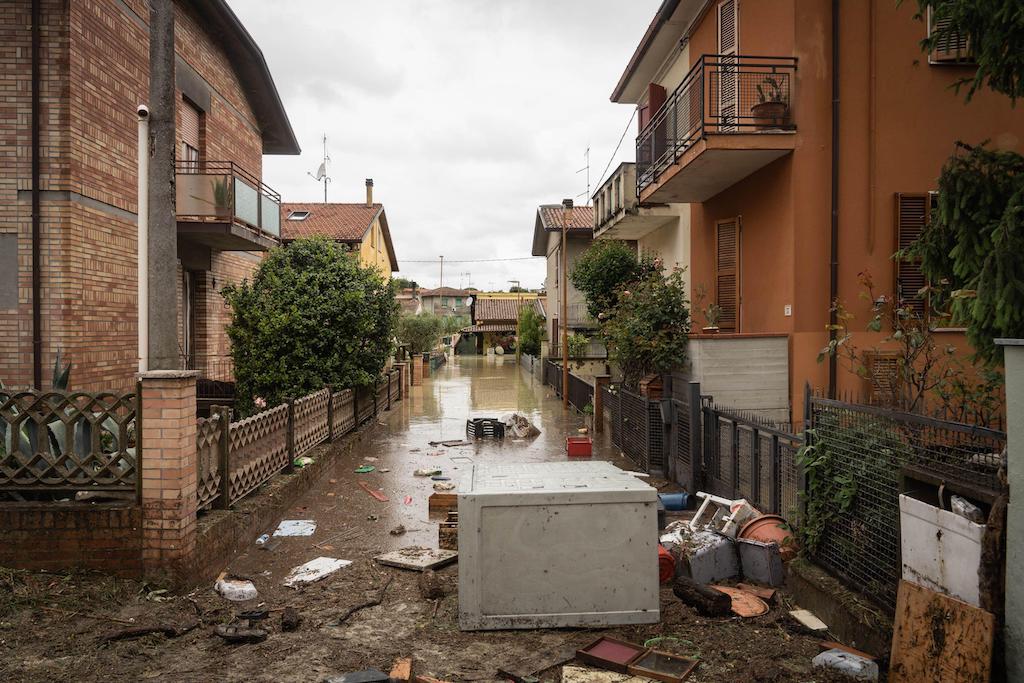
Faranda says that extreme rainfall is increasing in other parts of Italy, despite spring rain not increasing in Emilia-Romagna. He adds in a statement:
“Italy’s complicated geography and meteorology means that climate change can have different effects in quite small areas, for example increasing the risk of heavy rainfall in one area while not affecting it in a neighbouring area,”
Otto adds that, while globally there is more extreme heavy rainfall, “climate change can also affect the atmospheric circulation so how weather systems develop, how they move, where they move”.
The study findings show that Emilia-Romagna experienced “the wettest event of this type” on record in the first 21 days of May.
The study says there is a 0.5% chance of an event like this happening in any given year, meaning it is only due to happen once every 200 years.
The region has experienced severe flood events in the past, but the study says these mostly occurred in autumn and winter. No previous floods and landslides come close to the severity of this month.
Looking ahead
The study says that land use and urban planning may have impacted the likelihood of flooding. The region has become more built-up in recent decades, with limited room for water drainage, which increases flooding risks and impacts.
The floods impacted over 100 cities and towns in Emilia-Romagna. The study authors note:
“At the time of writing, many towns are still under water.”
The study says that due to the “extremely rare” nature of this rainfall in northern Italy, most buildings cannot be expected to withstand infrequent, intense weather.
Roop Singh, study author and climate risk adviser at the Red Cross Red Crescent Climate Centre, tells a press briefing:
“Some level of damage is to be expected, but as people are starting to look to rebuild, I think it’s very important to have a holistic review of how the climate has already changed in the region and future projections of changes.
“While this event wasn’t made more frequent by climate change, we do know that things like drought and heat are being affected by climate change, and there are many adaptation options that are robust to multiple hazards.”
These include prioritising nature-based solutions and implementing social security measures to reduce the economic cost of floods.
The study says that restricting the amount of city development in flood-prone areas can reduce vulnerabilities and potential damages from flooding. Retrofitting drainage networks can also avoid higher costs from flooding.
Increasing green spaces in urban areas across the region can mitigate flooding risks, the researchers add.
Singh says these actions “should be considered to ensure that this region is more resilient to extreme weather events in the future”.
The findings in this study have not yet been published in a peer-reviewed journal. However, the methods used are detailed in previous attribution studies.


